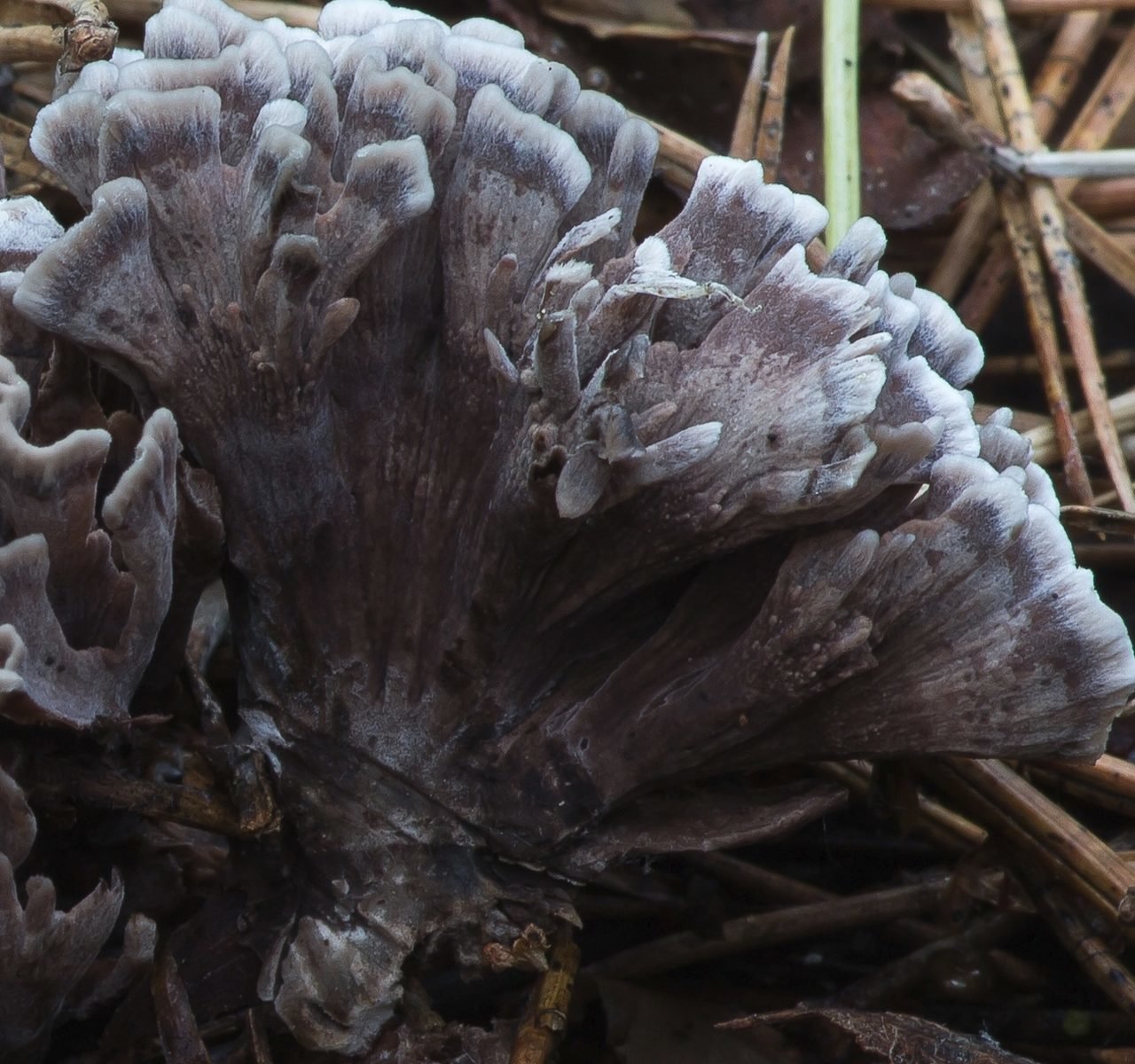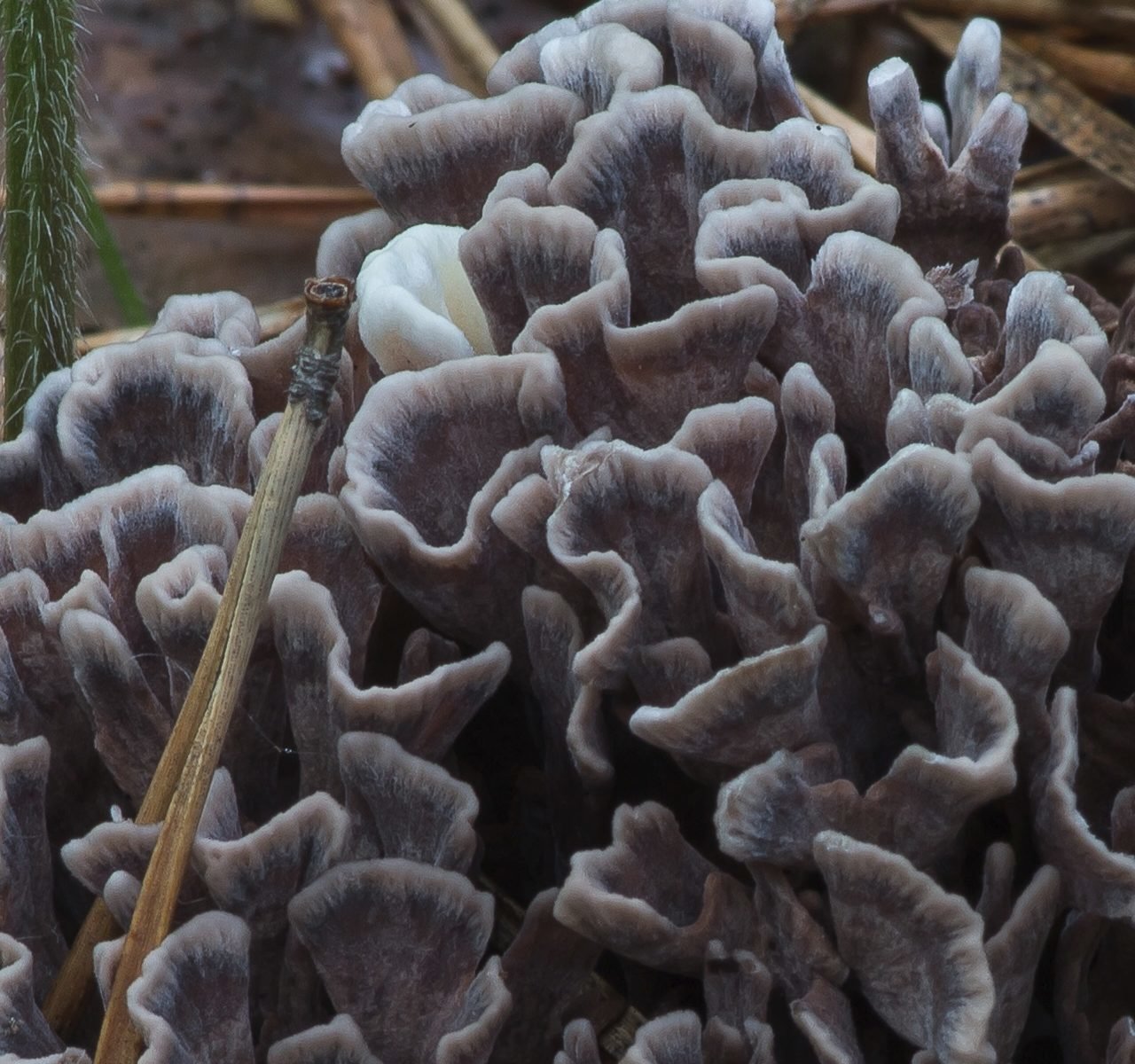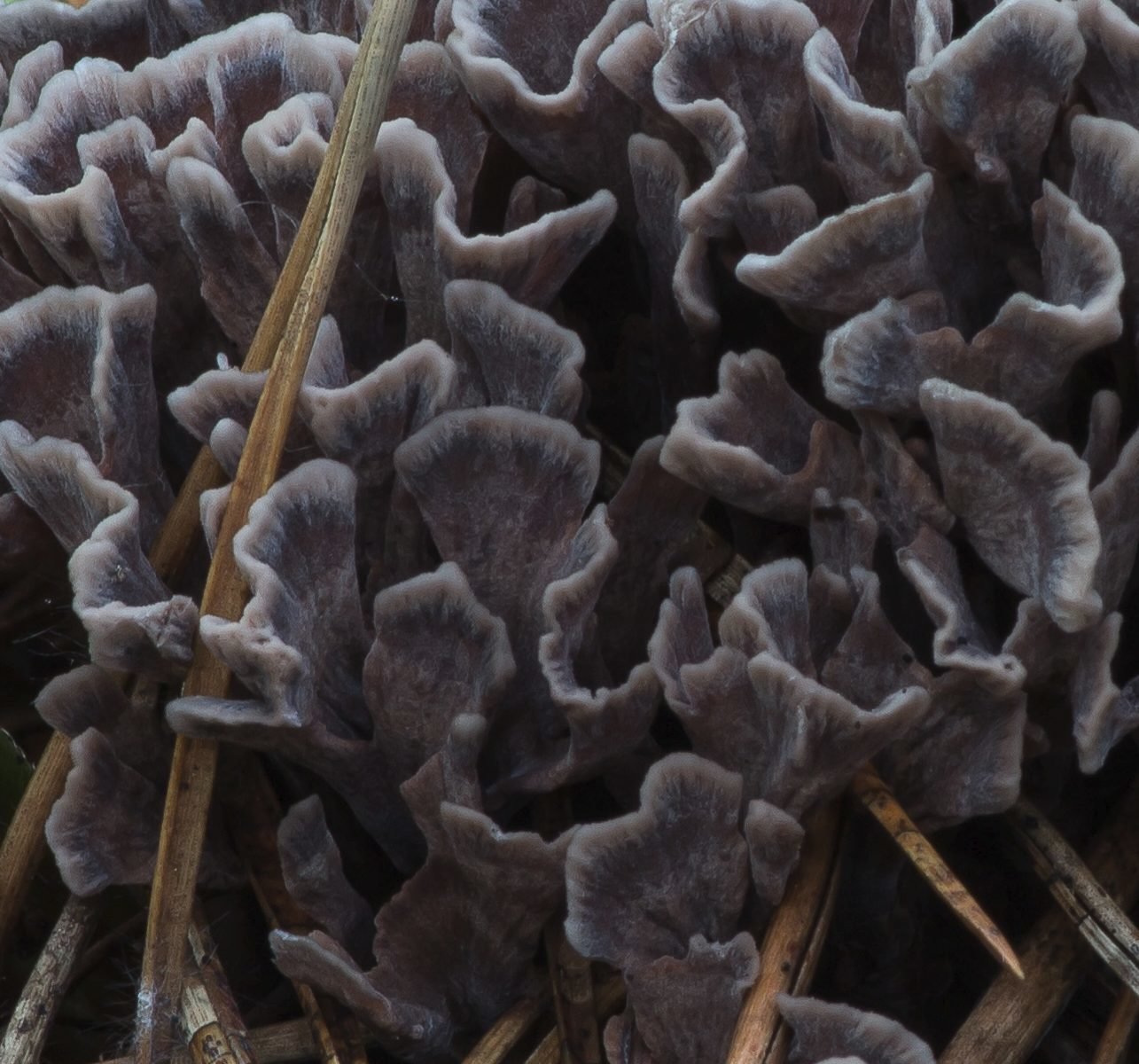Telephora palmate (Thelephora palmata)
- Одељење: Басидиомицота (Басидиомицетес)
- Пододељење: Агарицомицотина (Агарицомицетес)
- Класа: Агарицомицетес (Агарицомицетес)
- Подкласа: Инцертае седис (неизвесног положаја)
- Редослед: Тхелепхоралес (Телефориц)
- Породица: Тхелепхорацеае (Телефорацеае)
- Род: Тхелепхора (Телепхора)
- Тип: Thelephora palmata
:
- Clavaria palmata
- Ramaria palmata
- Merisma palmatum
- Phylacteria palmata
- Thelephora diffuse

Telephora palmata (Thelephora palmata) is a species of coral fungus in the telephoraceae family. The fruit bodies are leathery and coral-like, with branches narrow at the base, which then expand like a fan and split into numerous flattened teeth. The wedge-shaped tips are whitish when young, but darken as the fungus matures. A widespread but uncommon species, it is found in Asia, Australia, Europe, North America and South America, fruiting on the ground in coniferous and mixed forests. The palmate telephora, although not considered a rare mushroom, nevertheless, catches the eye of mushroom pickers not often: it disguises itself very well under the surrounding space.
The species was first described in 1772 by the Italian naturalist Giovanni Antonio Scopoli as Clavaria palmata. Elias Fries transferred it to the genus Thelephora in 1821. This species has several synonyms derived from several common transfers in its taxonomic history, including Ramaria, Merisma and Phylacteria.
Other historical synonyms: Merisma foetidum and Clavaria schaefferi. Mycologist Christian Hendrik Persoon published a description of another species in 1822 with the name Thelephora palmata, but since the name is already in use, it is an illegitimate homonym, and the species described by Persoon is now known as Thelephora anthocephala.
Despite its coral-like appearance, Thelephora palmata is a close relative of Terrestrial Telephora and Clove Telephora. The specific epithet palmata “fingered” comes from Latin and means “to have the shape of a hand”. The common (English) names of the fungus are associated with its pungent odor, similar to the stench of rotten garlic. So, for example, the fungus is called “stinking earthfan” – “stinky fan” or “fetid false coral” – “stinking fake coral”. Samuel Frederick Gray, in his 1821 work The Natural Arrangement of British Plants, called this fungus “stinking branch-ear”.
Mordechai Cubitt Cook, an English botanist and mycologist, said in 1888: Telephora digitata is probably one of the most fetid mushrooms. One scientist once took a few specimens to his bedroom in Aboyne, and after a couple of hours he was horrified to find that the smell was far worse than in any anatomy room. He strove to save the samples, but the smell was so strong that it was completely unbearable until he wrapped them in twelve layers of the thickest packing paper.
Other sources also note the very unpleasant smell of this mushroom, but indicate that in fact the stench is not as fatal as Cook painted it.

Екологија:
Forms mycorrhiza with conifers. Fruit bodies grow singly, scattered or in groups on the ground in both coniferous and mixed forests and grassy fields. Prefers moist soils, often grows along forest roads. Forms fruiting bodies from mid-summer to mid-autumn.
Воћно тело Telephora palmatus is a coral-like bundle that branches many times from the central stem, reaching a size of 3,5-6,5 (according to some sources up to 8) cm in height and also in width. The branches are flat, with vertical grooves, ending in spoon-shaped or fan-shaped ends, which seem to be incised. Very light edging can often be discerned. The twigs are initially whitish, creamy, pinkish, but gradually turn gray to purplish brown at maturity. The tips of the branches, however, remain whitish or considerably paler than the underparts. The lower parts are pinkish-brownish, below are dark brown, brown-brown.
Leg (common base, from which the branches extend) about 2 cm long, 0,5 cm wide, uneven, often warty.
Целулоза: hard, leathery, fibrous, brown.
Хименијум (fertile, spore-bearing tissue): amphigenic, that is, it occurs on all surfaces of the fruiting body.
Смелл: rather unpleasant, reminiscent of fetid garlic, also described as “old cabbage water” – “rotten cabbage” or “overripe cheese” – “overripe cheese”. Telephora digitata has been called “a candidate for the stinkiest fungus in the forest.” The unpleasant smell intensifies after drying.
Споре прах: from brown to brown
Under the microscope: Spores appear purple, angular, lobed, warty, with small spines 0,5-1,5 µm long. The general dimensions of elliptical spores are 8-12 * 7-9 microns. They contain one or two oil drops. Basidia (spore-bearing cells) are 70-100*9-12 µm and have sterigmata 2-4 µm thick, 7-12 µm long.
Нејестиво. Нема података о токсичности.
Thelephora anthocephala is somewhat similar in appearance, but differs in branchlets that taper upwards and have flattened tips (instead of spoon-like ones), and lack of a fetid odor.
The North American species Thelephora vialis has smaller spores and a more variable color.
Dark types of ramaria are characterized by a low-fat texture of the pulp and sharp ends of the branches.

This species is found in Asia (including China, Iran, Japan, Siberia, Turkey, and Vietnam), Europe, North and South America, including Brazil and Colombia. It has also been registered in Australia and Fiji.
The fruiting bodies are devoured by the springtail, Ceratophysella denisana species.
The mushroom contains a pigment – leforfic acid.
The fruit bodies of Telephora digitata can be used for staining. Depending on the mordant used, colors can range from black brown to dark greyish green to greenish brown. Without mordant, a light brown color is obtained.
Photo: Alexander, Vladimir.









